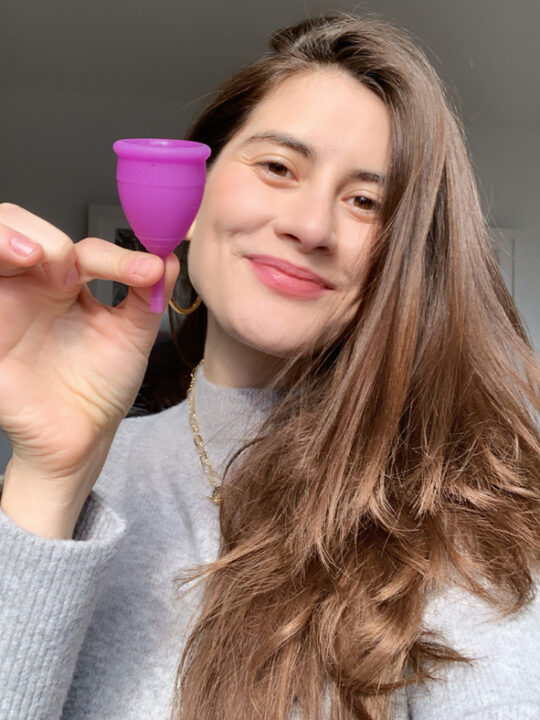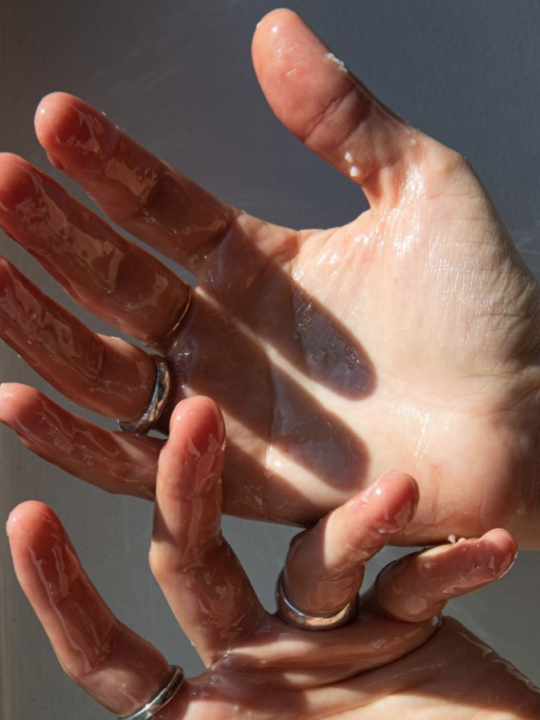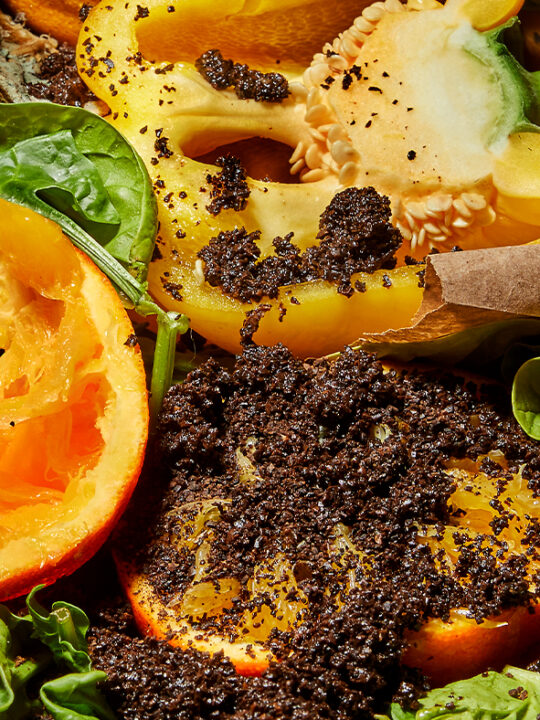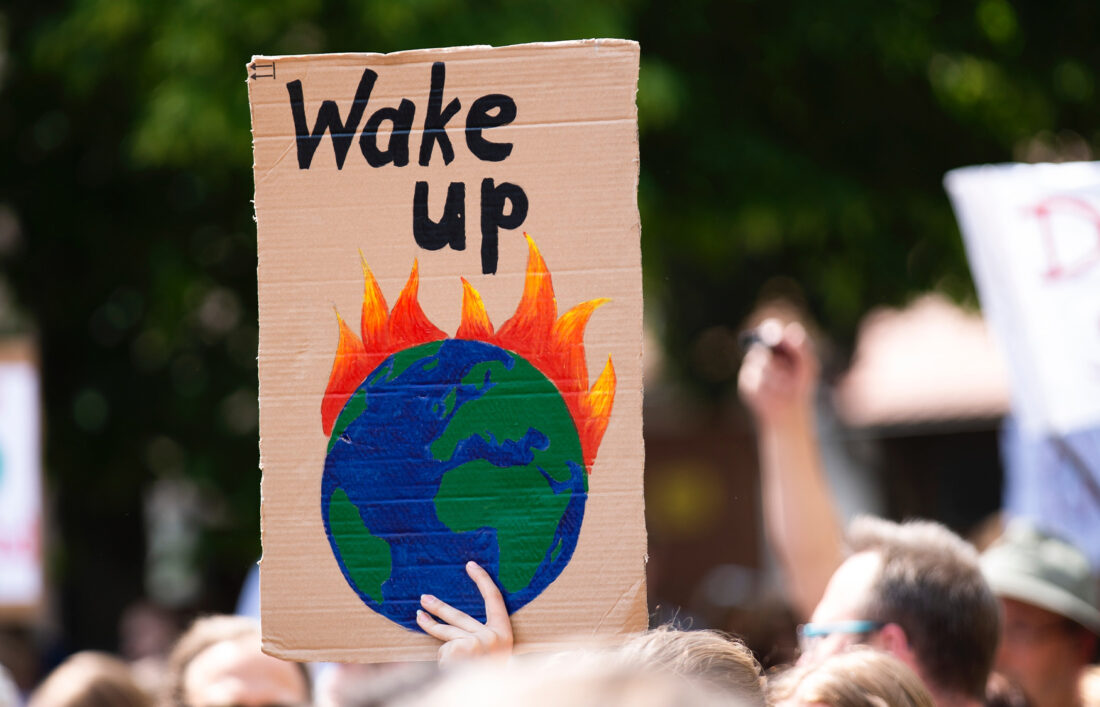
(NOTE: If you know why climate change is bad and you just want tips on how to take action now, head to the bottom of this article for actionable tips!)
Before we jump into climate change, let’s first take a step back to understand “the greenhouse effect”. You’ve probably heard of the term before, but what exactly does it mean? And how does it relate to global warming?
The Greenhouse Effect
In a greenhouse, sunlight enters through the clear glass walls. The light is partially absorbed by the plants and soil inside the greenhouse, and partly reflected back as heat radiation. Some of the heat escapes through the glass, while some is trapped inside the house. This causes temperatures to rise inside the greenhouse and helps keep the plants inside warm, so things like strawberries and tomatoes can grow even during the cold, winter months.
The Earth retains heat in a similar way. The sun’s energy comes through the atmosphere, and then it’s partially absorbed by plants, soil, and the ocean, and then the rest is reflected back. Rather than all of the energy escaping through the Earth’s atmosphere, some of the heat is trapped by gases in the air (aka greenhouse gases like carbon dioxide, water vapor, methane, nitrous oxide, and CFCs). The trapping of heat by greenhouse gases is necessary to maintain a livable climate on Earth. To put things into perspective, the moon—which is the same distance from the Sun as Earth—but has no atmosphere, can reach temperatures as low as -170°C at night. Hint, not livable.
So, global warming is a good thing?
Some heat is good, but too much is bad. And the problem is, the planet is now heating up too much—and too fast.
Levels of heat trapping, greenhouse gases in the atmosphere have naturally fluctuated throughout history, due to volcanic eruptions, variations in solar radiation, weather patterns, and the Earth’s position relative to the sun. But overall, concentrations of greenhouse gases have remained fairly constant over the past few thousand years. That is, until the last 150 years.
Since then, global temperatures have risen by 2°C, which may seem insignificant, but given the size and tremendous heat capacity of carbon sinks like the ocean, it takes a massive amount of heat to raise the Earth’s average temperature by even a small amount. The 10 warmest years on record have all occurred since 1998, and 9 of the 10 have occurred since 2005. Overall, we’re currently averaging temperates 1.15°C above the pre-industrial average, and scientists have been sounding the alarm that we must stay below a two-degree increase to avoid catastrophic climate impacts.
Psst. The difference between average global temperatures today and those during the ice ages is only 5°C! (Now we get why 2°C is actually quite a big deal!)
Where is all of this heat coming from?
Human activities such as landfills, the burning of fossil fuels, animal agriculture, the transportation sector, the use of fertilizers, and methane emissions from food waste, all emit greenhouse gases into the atmosphere and exasperate Earth’s natural greenhouse effect. For scope, since the Industrial Revolution, humans have increased the amount of carbon dioxide in the atmosphere by more than a third.
The more greenhouse gases there are in the atmosphere, the stronger the greenhouse effect, which means a hotter planet.
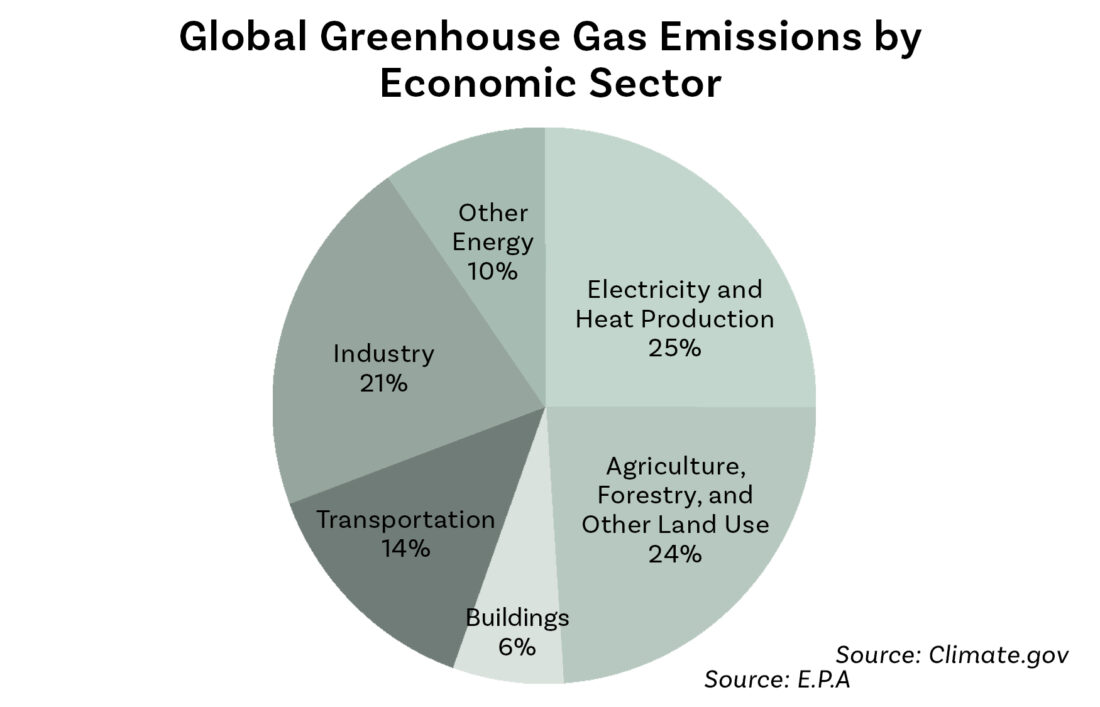
Why is too much warming bad?
Extreme Weather Patterns
This extra heat is driving seasonal temperature extremes—aka some places are experiencing record hot summers, while other areas are having colder-than-normal winters.
Warmer temperatures in the Arctic cause the polar jet stream (the boundary between the cold North Pole air and the warm equatorial air) to take wild swings, and bigger swings cause cold air to reach farther south. This explains areas like the eastern United States have been experiencing colder winters in a warming planet, and why cold weather does not mean climate change is fake news. Climate deniers, listen up!

A warmer climate also influences weather patterns in more drastic ways by creating an atmosphere that collects, retains, and drops water in such a way that wet areas become wetter and dry areas drier. This creates severe storms, floods, droughts, and wildfires—which pose serious risks for the natural environment and threaten human health. Droughts jeopardize access to clean drinking water, create food deserts, fuel wildfires, flash floods, dust storms, and other extreme heat events. While heavier rain causes flooding, mudslides, hazardous-material spills, promotes mold infestation and can contaminate drinking water.
Changing weather patterns also influence plant and animal growth—some expanding and while other shrinking others. Overall though, a warmer and wetter environment festers food-borne and waterborne illnesses and disease-carrying insects like mosquitoes (no thank you).
Rising Sea Levels
One of the biggest manifestations of climate change thus far has been arctic ice and glacier melt. 10 percent of the Earth’s land is covered with glacial ice, and glaciers store about 69 percent of the world’s freshwater. This means that if all of the ice on Earth melted, sea levels would rise approximately 230 feet worldwide.
The polar regions are particularly vulnerable to a warming atmosphere, and average temperatures in the Arctic have risen twice as fast compared to elsewhere on Earth. This is causing the world’s ice sheets to melt—and it’s melting fast. 10% of permafrost (aka permanently frozen ground) has already been lost, and in Montana’s Glacier National Park, where about 150 glaciers were once found, there are now only 25 glaciers bigger than 25 acres. Fewer glaciers and ice also means that less heat is reflected back into the atmosphere by the shiny surface of the ice, which creates a feedback loop that causes even more ice to melt.
Sea levels are now rising at a rate twice as much compared to the average annual rate in the 20th century, which puts entire populations at of people, wildlife, and plants at risk that live near the coast.
Polluted Air
Rising temperatures also worsen air pollution by increasing ground level ozone—which is created when pollution from things like cars, planes, and factory emissions react to sunlight and heat. This creates smog (which is especially life-threatening for people with asthma and allergies), and the hotter temperatures get, the more smog is created.
Wildlife Extinction
Many land and water species have already shifting their geographic ranges to cooler climes or higher altitudes in an attempt to escape warming, and seasonal behaviors and traditional migration patterns are been changing too. The problem is, with the velocity of temperate changes increasing more rapidly, many organisms cannot migrate fast enough, which is causing many species to go extinct. Warmer temperatures are also expanding disease-causing pathogens, which were once confined to tropical areas, and it’s causing more plants and animals to die. And things like deforestation and ocean acidification (learn more about how climate change is impacting the ocean here) are causing great a loss to many ecosystems.
Back in 2015, a study showed that vertebrate species were already disappearing at a rate 114 times faster than they should be, and according to a biodiversity report by the United Nations, over 1 million species of plants and animals are at risk of extinction.
Human Extinction
Scientists are sounding the alarm that climate change “the biggest global health threat of the 21st century.” From food and water scarcity, illnesses from air pollution and disease, heat-related deaths, natural disasters, and rising sea levels, climate change impacts all of us—but it disproportionally affects the global poor, elderly, and marginalized communities who live in more heavily impacted regions, and who are more susceptible illness and vulnerable to climate-afflicted illnesses.
Much like many other species have already started to do, as global temperatures continue to rise and extreme weather ensues, humans will also have to seek more liveable climates, which will create a massive climate migration. Today, 1% of the world is in a barely liveable hot zone. By 2070, that portion could go to 19%. But where will these billions of people go?
Climate change isn’t just a hot or cold planet, it’s a more or less livable planet. One where people of color will be most affected as high risk areas are predominantly BIPOC. So even though climate change will affect the entire planet, it will not affect it equally and different parts of the world will have different abilities to react and protect themselves due to things like GDP, geographic location, political standing, and leadership. So when you hear people say climate justice is racial justice, this is what they mean: mitigating climate change means people who live in high risk areas will feel less of the negative effects and consequences of climate change- which can range from health issues like respiratory illnesses to the rise of natural disasters like floods, hurricanes, and fires- which is why we need to take all actions to mitigate climate change NOW.
I’m just one person, so what can I do?
Every step to mitigate climate change is positive, no matter how big or how small. Here are some ways to advocate for the protection of people and the planet:


